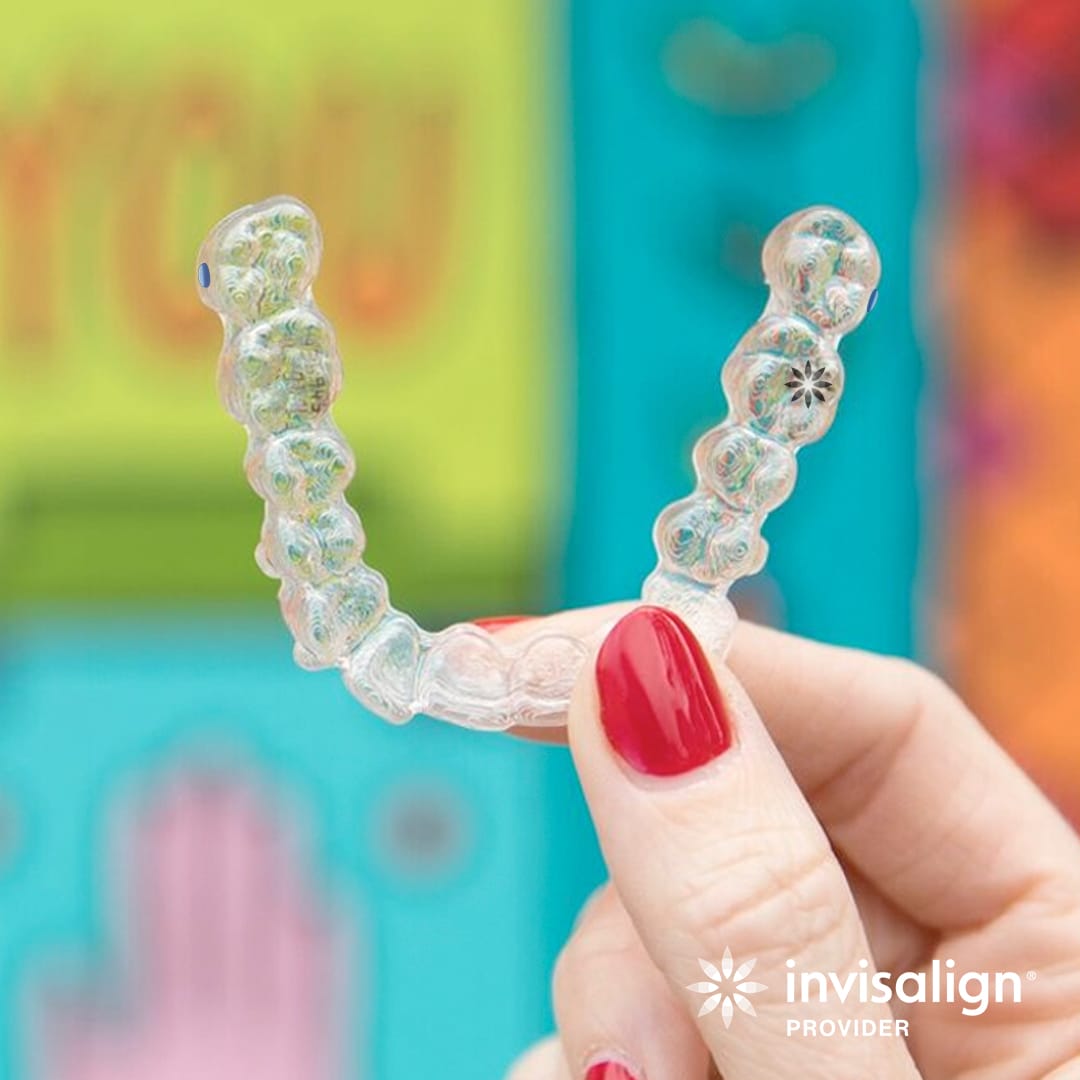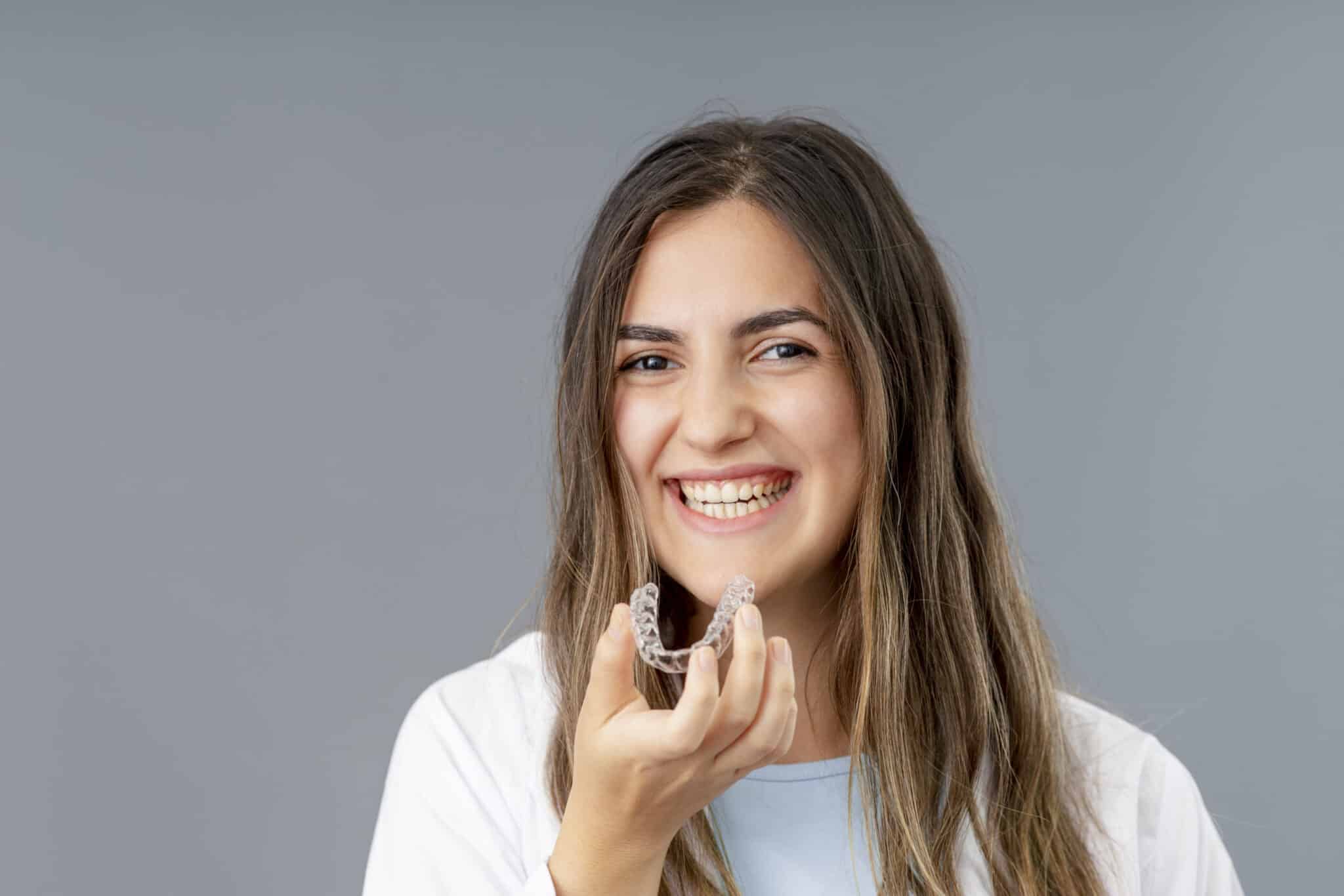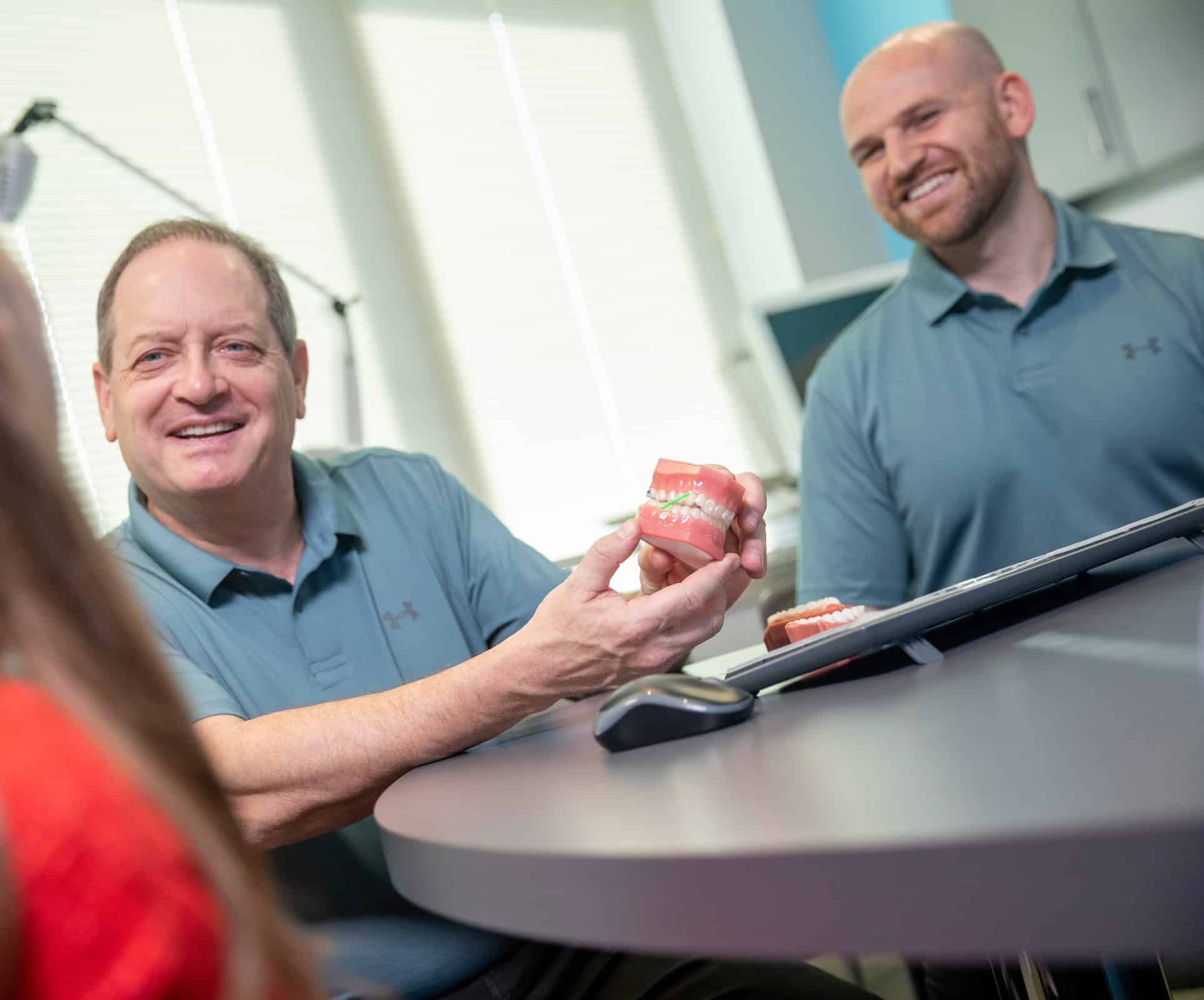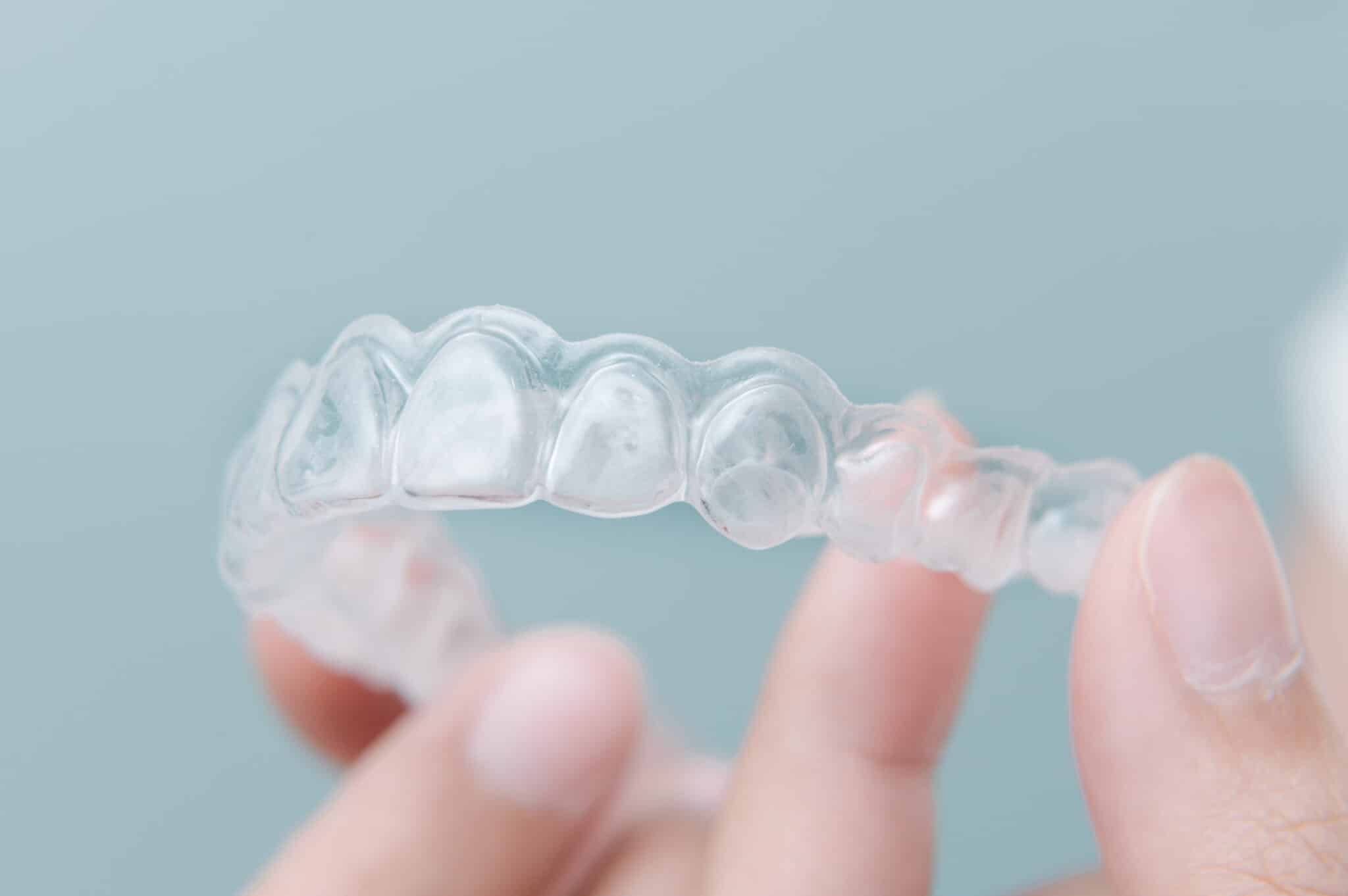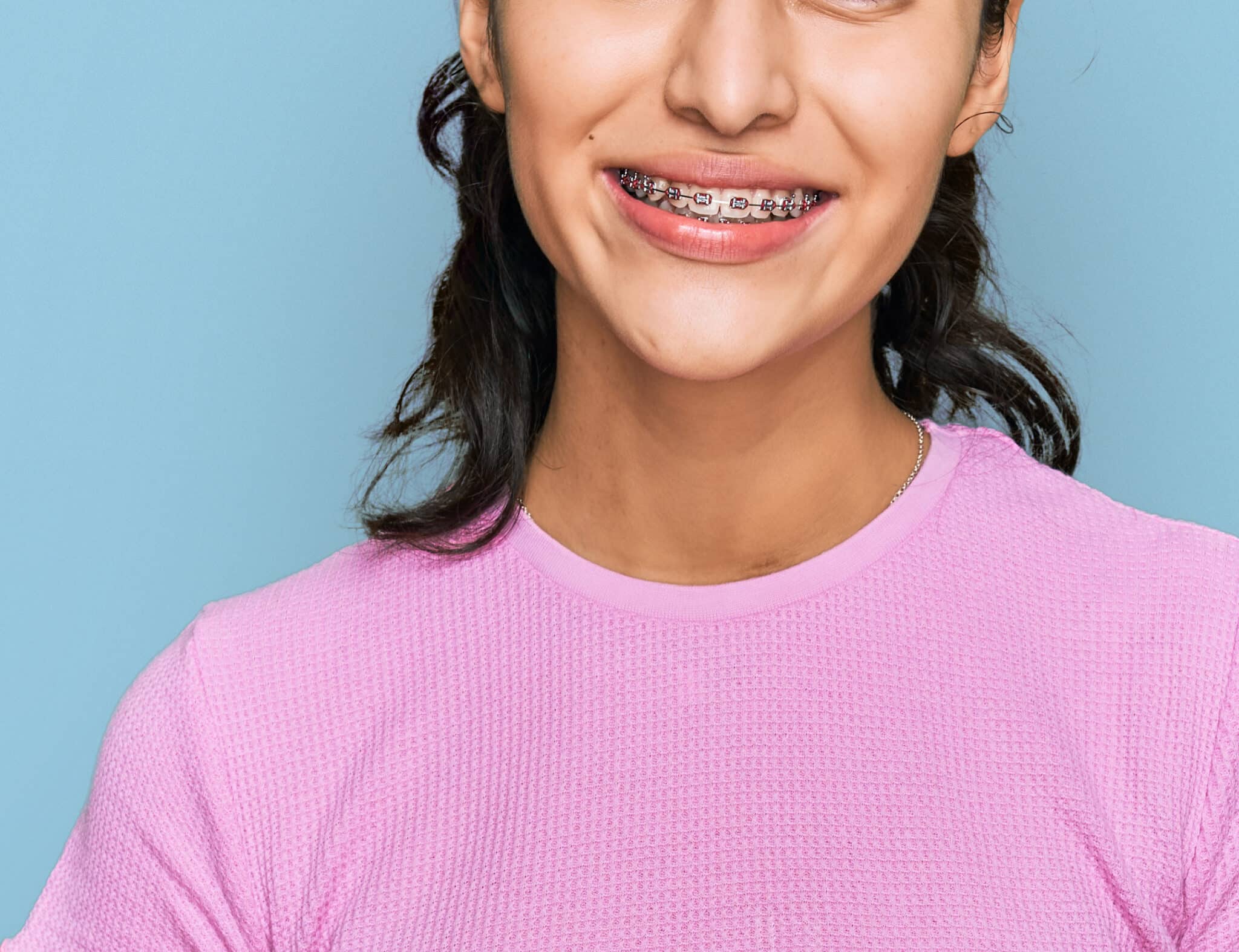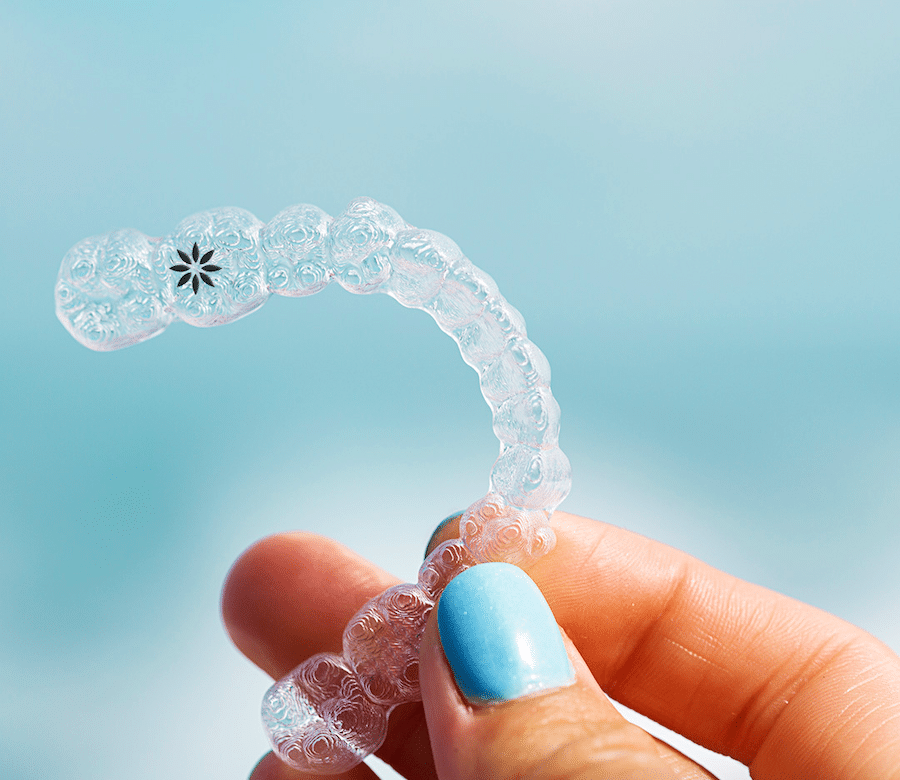Backed by more than two decades of innovation, Invisalign is the world’s most advanced clear aligner system. Using neither wires nor metal brackets, Invisalign aligners are removable and virtually invisible, creating a more discrete and comfortable journey to your ideal smile.
Through a series of custom-made clear aligners, Invisalign is used to close gaps between teeth, as well as treating overbite, underbite, open bite, crossbite, and overcrowded teeth.
Before we dive into who can use Invisalign, the benefits, what to expect when undergoing treatment, and what happens after Invisalign treatment is completed, let’s first understand the process of how these modern aligners work to transform your smile.
The Invisalign Process: A Closer Look
- Every patient at Dunegan & Cole Orthodontics receives a thorough assessment and custom-designed treatment plan from a 3D scan of your mouth.
- Once the Invisalign lab fabricates your clear aligners based on your custom treatment plan, you will pick up your first aligners and your doctor will examine your smile, ensuring everything fits properly.
- For optimal results, you will wear your aligners all day, every day, except when you eat, floss, or brush your teeth. Because Invisalign braces are removable, you will be able to briefly remove them any time you need to throughout the day.
- Your doctor will guide you to schedule face-to-face check-ups every few weeks to check your progress and pick up the next batch of aligners.
Who is Invisalign Suitable For?
The average age of patients undergoing Invisalign treatment is around 12 to 13; however, each patient’s smile is different and may result in earlier or later treatment. So whether you are a parent exploring orthodontic treatment for your child, or an adult who has put off treatment for years, Invisalign is an effective and discreet solution.
Advantages of Invisalign Over Traditional Braces:
- Since these are clear aligners, most people won’t notice you’re wearing them.
- The movement of your teeth is more precise with Invisalign than traditional braces.
- It’s easier to maintain good oral health with Invisalign. You will remove the aligners when you eat, brush your teeth, and floss.
- These aligners are much more comfortable than metal braces. They don’t irritate your teeth or gums.
- Invisalign saves you time. Unlike braces that require more frequent office visits to change the arch wire and make adjustments, you will have fewer checkups with Invisalign.
- There are no eating restrictions with Invisalign. Traditional wires and brackets have a long list of foods you unfortunately can’t enjoy because they can damage or get stuck in your braces; however, since Invisalign aligners are removable, there are no food restrictions at all.
What to Expect:
Treatment time: Many orthodontists will advise that Invisalign treatment can take between 6 – 12 months or more, depending on your case; however, you will start seeing results in a matter of weeks. There’s no one-size-fits-all for determining how long your treatment will last. That’s because every patient will have their own individual tooth and/or bite misalignment.
Discomfort: One of the best reasons to invest in Invisalign is how comfortable these aligners are to wear. Remember that your teeth are shifting into a new position, so you can expect to feel some mild discomfort as they move, especially with the first set of aligners. The pressure you will feel on your teeth when you first put on a new set of aligners will gradually fade over the course of a few days.
Speech: It may take a little while for your tongue to get used to having your Invisalign aligners in your mouth, and you may have a slight lisp for a few days. But this should disappear quickly.
What Happens After Invisalign Treatment Is Completed?
After any orthodontic treatment, whether it’s Invisalign or anything else, it is recommended that you wear a retainer. A retainer is designed to keep your teeth in alignment. Without it, your teeth can gradually move back to their former position. If your teeth start to shift, you may need to temporarily wear aligners again to reposition them.
Want to Learn More?
At Dunegan & Cole Orthodontics, we are Diamond Plus Invisalign Providers, meaning we treat more patients with Invisalign than any other dentist or orthodontist in our area. We are also consistently voted as the top orthodontist in our area! If you haven’t visited an orthodontist yet and want to find an Invisalign provider near Gainesville, Haymarket, Warrenton, Manassas, or any of Prince William County that is right for you, schedule a free consultation with us today!
